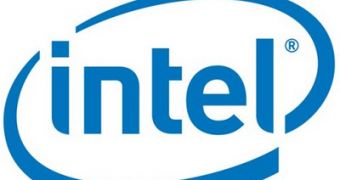No matter how large or how powerful it is, any corporation is eventually faced with failure. Intel confirmed this on Friday, when it announced yet another, albeit vaguely explained, setback in its development of the Larrabee chip. Still, how a company comes out of such a situation is what defines it in the end, and Intel seems determined to waste no time mourning the Larrabee. The Santa Clara-based enterprise is still the high-volume “integrated graphics” market leader and its next step seems to be in the area of mobile computing.
The upcoming “Pine Trail” chips from Intel will be the first products to place the graphics and the “CPU” circuits on the same piece of silicon. This development will remove the need for motherboard-integrated graphics chipsets and will likely be the first choice of end-users interested in low-cost computing.
“This is the next logical step in further integration brought to us by Moore's Law,” Jon Peddie, president of Jon Peddie Research, which tracks the graphics-chip market, said. “This is where the volumes of sales are.”
The Pine Trail chips will likely take control of the low-cost graphics market segment and Intel's solution will provide minimal graphics capabilities for ultra-low cost systems, as opposed to AMD and NVIDIA, which can only offer graphics as part of chipsets or graphics adapters. Obviously, a “CPU” with integrated graphics will reduce manufacturing costs for motherboard makers as well, since graphics chipsets won't be needed anymore.
AMD has been working on its own version of a CPU-GPU merger, its Fusion technology, but it also has had to delay the release several times, currently being set for 2011. The new chips from Intel will, thus, have no competition and will likely become the mainstream choice for netbook manufacturers. MSI has been working on a Pine Trail-based netbook since August, the Wind U150, which will debut at the CES 2010 and will be the first of probably many ultra-mobile personal computers to use this computing/graphics solution.
The netbook market has been growing at a rapid rate and Intel will likely score large amounts of sales in this area if its Pine Trail performs accordingly. In addition, the Arrandale chip, which will also debut at the CES, is aimed at notebooks and will be made out of a dual-core 32nm-based processor and a 45nm graphics and system logic core. These two products will likely be the basis of Intel's future marketing strategy on the mobile-computing market.
Intel continues to be the leading supplier of integrated graphics solutions, even though NVIDIA's shares went up by over 12% after the announcement concerning the Larrabee issues.

 14 DAY TRIAL //
14 DAY TRIAL //